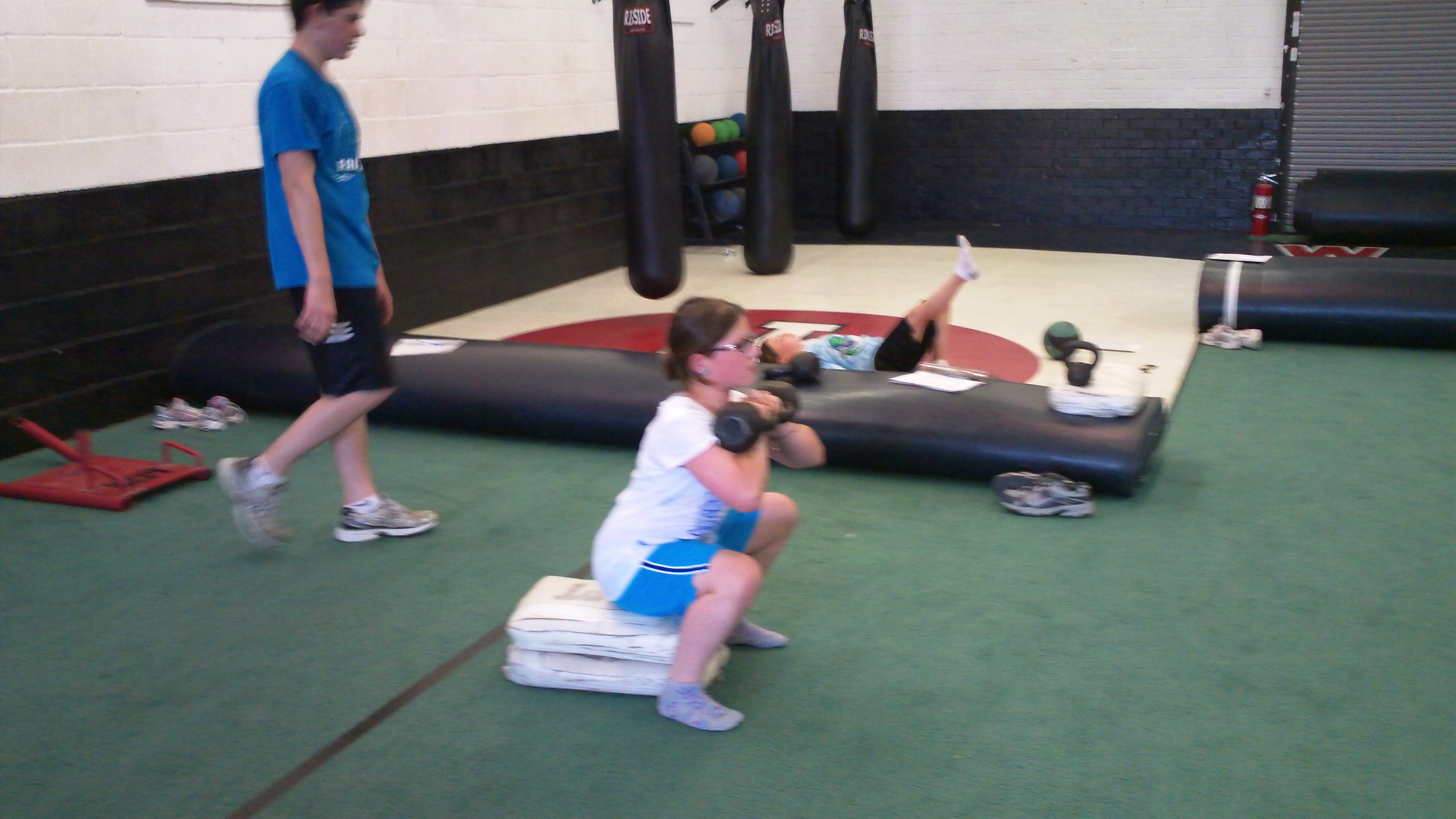Last post delved into training strategies for kids pre-puberty. Today we'll discuss weight training suggestions for kids after they've hit puberty. As I stated before, the American Pediatric Association states that puberty starts around 8-13 (girls) and 10-14 (boys). While a 10 year-old girl might be at the same sexual maturity as a 16 year-old girl, physically, mentally, and emotionally, they're vastly different. Therefore, I'm not going to train a 10 year-old the same as I do a 16 year-old.
So what's different?
To be perfectly honest: not much.The same principles of training youths apply across the age span.
1. Address and improve movement quality
2. Improve body awareness, muscular control, and coordination
3. Progressively overload (add weight or increase the difficulty of exercises) movements to produce positive adaptations appropriate to the athlete's physiological status. (Lotta big words for saying challenge the athlete to grow stronger in ways that will not hurt them.)
Coaches and trainers should always address movement above all. If the athlete moves like poop, adding weight is only going to ingrain the dysfunction that could, ultimately, lead to injury.
That being said, there are a few differences between the two age groups. Older athletes will, typically*, learn movements faster. They've been around longer, played more sports (hopefully), and have a fairly rich movement map. Thus, as they learn proper mechanics quickly, they can handle heavier loads sooner. Does this mean max effort? NO! (stop it, stop that nonsense right now!) It means they can SLOWLY add weights over the course of several months/years to their movements. Strength gains are a marathon, not a sprint.
Older athletes are ususally better at maintaining focus during their workouts (though not always...). This allows room for exercises that require more concentration. For example, an older teenager might front squat with a barbell-
-whereas a younger athlete will squat with a light kettlebell. The barbell squat requires (strength, duh) a greater amount of focus as the athlete has to remain tight to stabilize the bar as well as move in a correct squat pattern. Does this mean a 16 year-old moves straight to the barbell? Nope! They have to prove that a) they have the ability to move in a safe squat pattern (hips back, chest up, knees out) and b) they have the strength (core, upper back, legs). At SAPT we will NOT progress an athlete beyond what we think they're capable of just for the sake of using a barbell.
Older athletes can generally handle more complex movements. For example, a heiden to a med ball throw:
Versus our younger athletes who will work on those two movements independently (jumping and landing, and throwing a ball correctly).
Again, and I can't say this enough, progression should be tailored to the athlete's skill and ability. Throwing a barbell on the back of a teenager just because he's 17 doesn't mean he's able or ready to squat with that barbell. Being 17 does mean that, if he's demonstrated good movement and strength, we can probably progress him to the barbell (we wouldn't do that for a younger kid. They would just continue with kettlebell variations until they've grown a bit more).
The basic principles of training youths across the age-range are the same:
1. Address and improve movement quality
2. Improve body awareness, muscular control, and coordination
3. Progressively overload (add weight or increase the difficulty of exercises) movements to produce positive adaptations appropriate to the athlete's physiological status.
Older athletes will generally be able to:
1. Learn and load movements more quickly than younger athletes
2. Perform exercises that require more concentration
3. Perform more complex exercises
Overall, training youths is like vanilla ice cream: same flavor, different sprinkles.
*I say "typically" because we've seen older kids who have such poor motor control that we have to start them out as we would a 9 year-old and progress them accordingly. What a child does during their infant and toddler years matters! (oooo, teaser for next week!)

